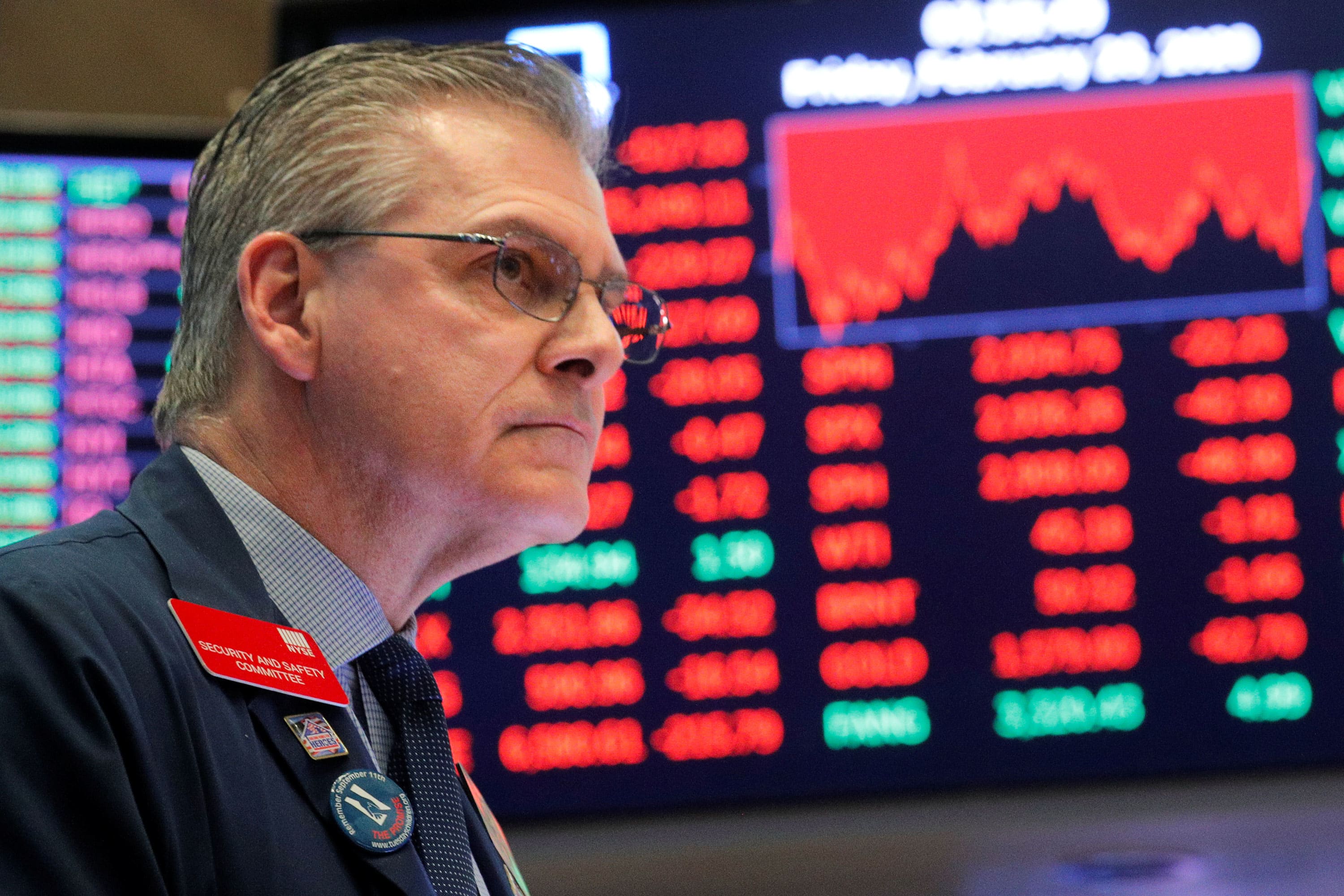Dow drops more than 300 points in volatile trading as market set to post a losing week

Traders work on the floor of the New York Stock Exchange (NYSE) in New York City, U.S., December 2, 2021.
Brendan McDermid | Reuters
U.S. stocks came under pressure again on Friday with major averages on track for a losing week amid worries about tighter monetary policy and the ongoing pandemic.
The Dow Jones Industrial Average were down 380 points, or 1%. The S&P 500 fell 0.4%, down for a second day. The tech-heavy Nasdaq Composite reversed higher and last traded up 0.3%.
The major averages are on track to post a negative week with the Nasdaq being the biggest loser. The tech-heavy benchmark has declined nearly 3%, while the Dow and the S&P 500 were both down more than 1%.
Friday coincided with the expiration of stock options, index options, stock futures and index futures — a quarterly event known as “quadruple witching” that typically comes with heightened volatility.
The S&P financial sector was the biggest laggard on Friday after bank stocks outperformed in the previous session. Goldman Sachs lost nearly 4%, while Bank of America and JPMorgan both traded over 2% lower.
Many megacap tech shares traded in the red. Amazon and Microsoft both lost about 1%, while Alphabet and Meta Platforms also dipped 1% each. Microsoft has lose more than 6% this week alone, and Apple is down 5% on the week.
Shares of one-time EV darling Rivian tumbled 11% Friday after the truck maker said it will fall short of its 2021 production target.
Investors appeared to be rotating from high-growth tech names to consumer staples, as they continued to digest the latest move by the Federal Reserve along with rising inflation and the spread of the omicron Covid variant.
“As the Federal Reserve turns more hawkish and expectations for higher interest rates rise, investors are lowering exposure to growth stocks,” said Jim Paulsen, chief investment strategist at The Leuthold Group. “Typically, growth stocks exhibit a higher duration compared to value stocks because a higher proportion of their cash flows will be received in the more distant future.”
FedEx shares jumped 5% after quarterly earnings and revenue results topped expectations and it announced a $5 billion buyback. The shipper also reinstated its original 2022 EPS forecast.
Earlier this week, the Fed announced a more aggressive plan to wind down its asset purchases, and that it is looking at hiking rates multiple times in 2022.